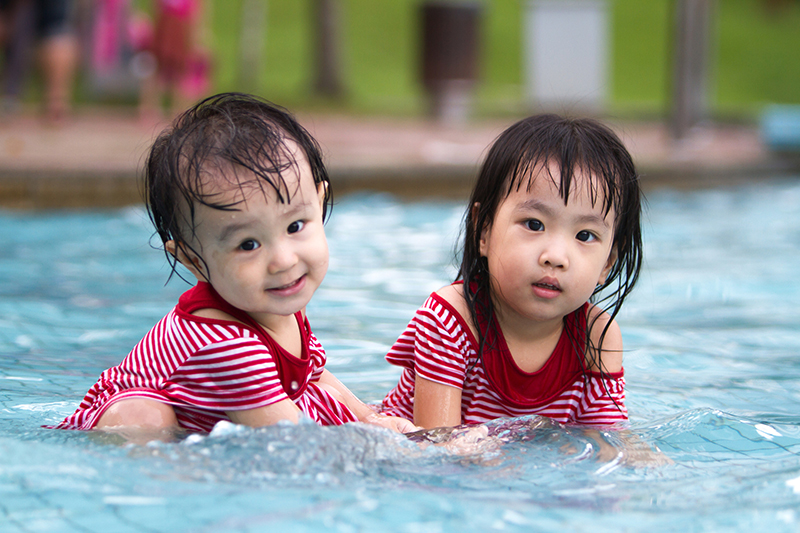Families For Life | Water, Water, Everywhere

In hot, humid Singapore, most children relish getting wet, playing at an outdoor fountain or splashing around at home in the bath tub.
Take advantage of a child's natural enthusiasm for water play by turning it into a learning opportunity -- after all, water play promotes hand-eye coordination and connects your child with the natural world. It also encourages scientific and sensory exploration, introduces basic math and science concepts and enhances his concentration and problem-solving skills. Best of all, your child is having fun by learning through play!
Begin with experimental play
All you need to start is a small collection of safe, unbreakable cups and containers -- think recycled food containers, yogurt tubs, plastic milk/ juice jugs, plastic kitchenware, sponges -- and a large container or bucket of water. If you have a bathtub, you can fill it with water, or head outside and let your child play in a small wading pool. Always supervise your child and never leave him unattended.
If your child is old enough to know not to drink the water, add ladles, scoops, spoons, straws, and droppers to encourage him to interact with the water. Other interesting things to play with include plastic, metal sieves, or colanders. Simply playing with, exploring and experimenting develops not only hand-eye coordination and fine motor skills but important mathematical and scientific concepts.
Introduce a little math
While engaging in water play, take the opportunity to engage in meaningful discussions with your child while introducing new words and ideas. If you haven't already, add a few measuring cups to your arsenal of water toys. Here are a few questions to ask: Is the container empty or full? Is the water in the container shallow or deep?
Other mathematical concepts to explore include:
- heavy or light
- same or different
- more or less
- full or empty
Now, for some science!
Water play stimulates your child's curiosity about the natural world, which leads to experimentation and encourages logical thinking. Try introducing a few (clean) sponges and dishrags to the mix -- soak each item full of water and squeeze it out. Use different materials and ask your child to measure the amount of water each sponge or cloth can absorb. While engaging in this activity, talk about how much a material is able to absorb water.
To further expand on your child's grasp of the concepts above, try adding a few other activities. Build boats out of foil, and then see how many pebbles you would need to weigh the boat down with before it sinks. Try to make boats of different shapes and discuss how that affects buoyancy.
Other scientific concepts you can introduce when your child is older are:
Transparency: Why are you able to see through water? Why can't you see through other things?
Shape: Using dish detergent or baby wash, create a soapy solution and blow bubbles. Use objects with different shaped holes, and ask your child why bubbles are always spherical (largest volume with the smallest surface area).
Solubility: Using items such as flour, sand, sugar, and oil, explore with your child what dissolves and what doesn't, what mixes with water and what won't.
Bonus activity
If your child loves the floating and sinking activities, build on what he had learnt by asking him to build a boat that floats. It would be helpful if he has a toy boat or two to play with before starting this project.
Materials:
- sticky tape
- plasticine
- clean, used containers (plastic tubs, empty milk/ juice cartons, yoghurt pots, etc)
- popsicle sticks
- construction paper or old magazines
- corks
- straws
- other recycled materials that can be used for making a toy boat -- be creative!
Method:
Let your child's imagination run free! Take a step back and let your child experiment with making a boat that can float. Encourage your child to learn from the experience by comparing the different boats he makes and how well they float. Ask him what makes some float better than others, and how he could improve the design the next time. Have fun!
Explore more
- Bubbles in the bath
- Imagining and creating: toddlers
- Imagining and creating: preschoolers
- Preschooler creative learning and development: ideas and activities
- Water play while preparing food (3-6 years)
Contributed by:
Early Childhood Development Agency